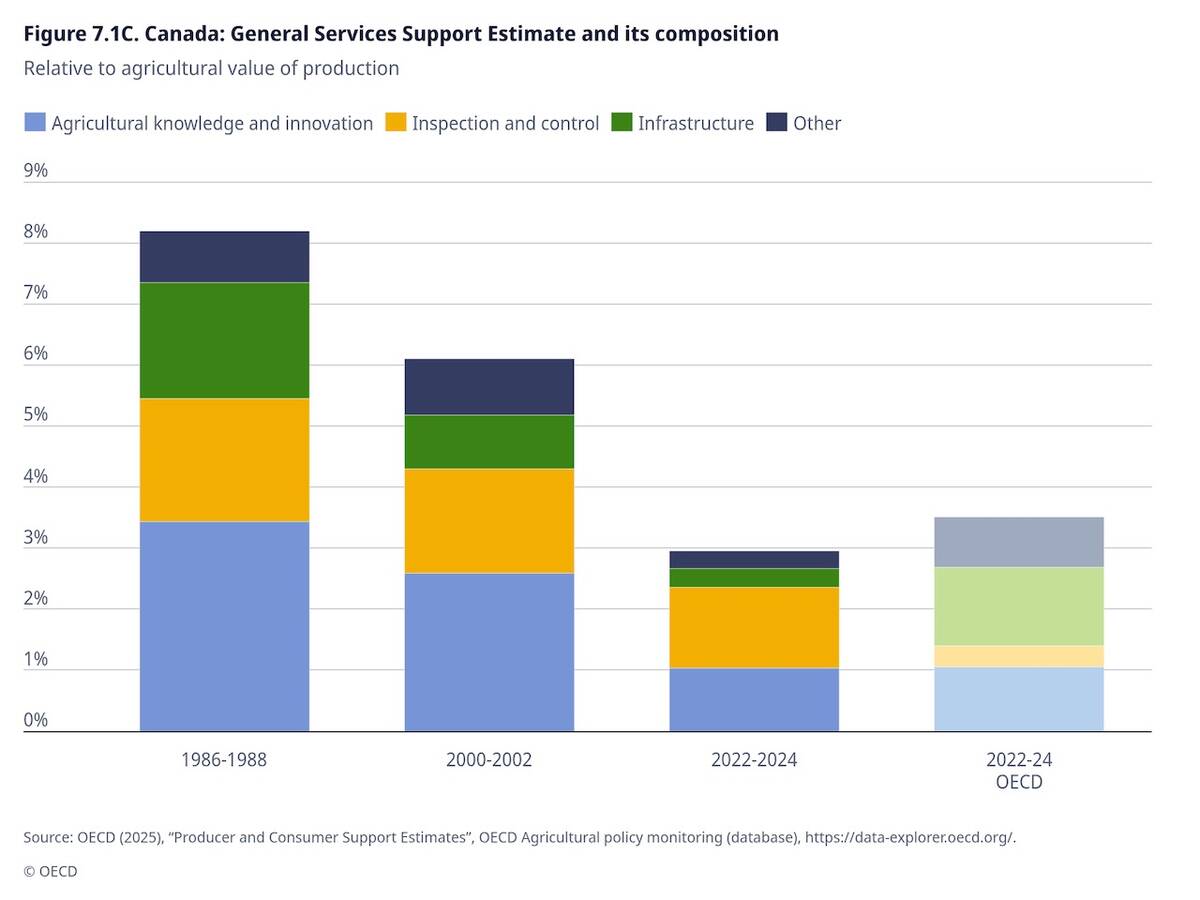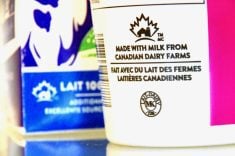Now that we have some clarity on the economic future of the Canadian Wheat Board, attention is slowly turning toward the issue of supply management, which has arguably served our agricultural economy well for decades.
Economically speaking, these sectors have been unwavering, and consumers have long benefited from stable retail prices for these products. However, the global agricultural landscape is shifting, and international talks currently underway suggest the possibility of externally imposed agricultural reforms.
For example, WTO’s Doha Round, focused on addressing agricultural trade distortions, has made Canada look like a lone wolf on supply management issues since negotiations began in 2001. However, by many accounts Doha is all but dead.
Read Also

OECD lauds Canada’s low farm subsidies, except supply management
The Organization for Economic Co-operation and Development says Canada’s farm subsidies are among the lowest, but still criticized supply management industries like dairy, poultry and eggs.
The real menace now stems from other potent multilateral agreements with the U.S. and the Asia-Pacific region regarding the Trans-Pacific Partnership, and even from the European Union regarding CETA (the Comprehensive Economic and Trade Agreement).
Our trade-friendly federal government is keen in pursuing an aggressive global commerce agenda, and is more than willing to put supply management on the table. Many agree that supply management in Canada will ultimately end; indeed, many farmers working under supply management believe this as well.
Should supply management cease, threats to our domestic market would come primarily from the U.S., particularly to the dairy industry. The U.S. has dairy production capabilities that are 14.5 times larger and exports that are 16.2 times larger than Canada’s. The U.S. currently produces twice the amount of dairy that is needed for its domestic consumers. These production capabilities would allow the U.S. to flood the Canadian market with cheap dairy products, instantly jeopardizing the Canadian dairy industry.
In addition, Canada would have competition from emerging markets and more efficient countries such as Australia. While analysts predict that the Canadian dairy market would not be significantly affected in a liberalized scenario, such forecasts are questionable, considering Canada’s inability to be competitive in domestic and international markets.
The Canadian dairy industry has strengths that can be leveraged in a liberalized market, such as the availability of abundant land, low-cost good-quality feed and genetics, which give farmers the ability to scale their productions with cost efficiencies.
In order to position the Canadian dairy industry in a competitive place in the global market, policy reform is needed at the international and domestic levels.
In the end, the potential for Canada’s domestic industry to leverage its strengths and become competitive will only manifest itself if interest groups put the long-term success of the dairy industry ahead of their desire for short-term inflated profit, if consumers become advocates for themselves, and if government starts pushing for reform.
Supply-managed industries should consider committing to their own reform agenda before Canada is asked to comply with externally generated standards.














